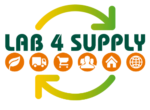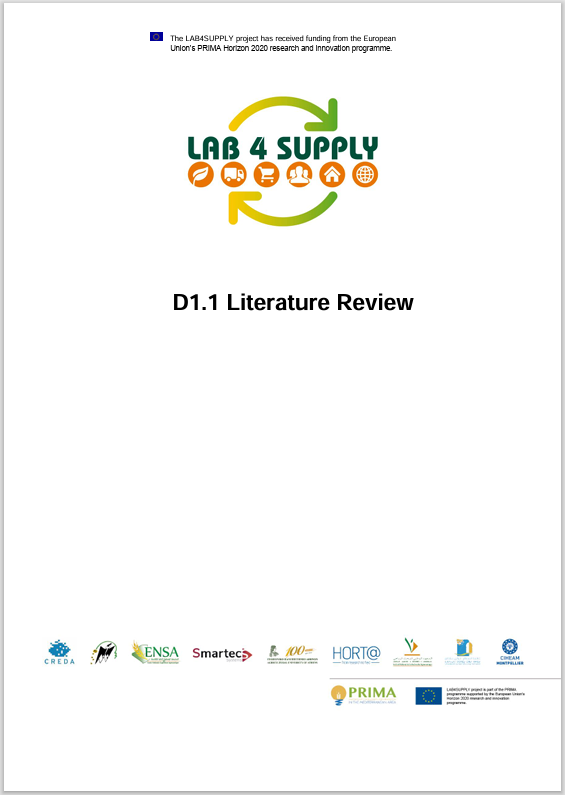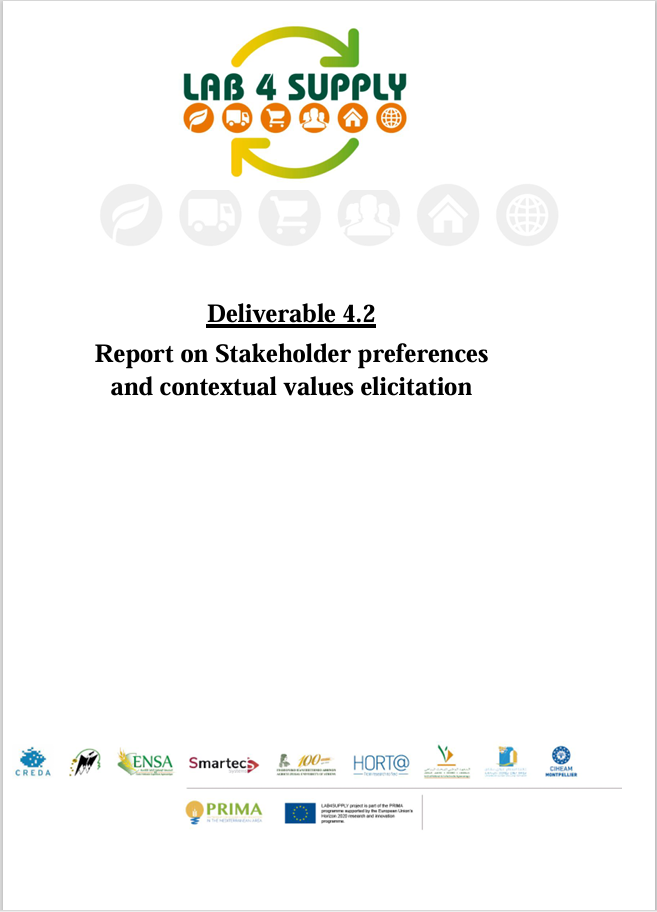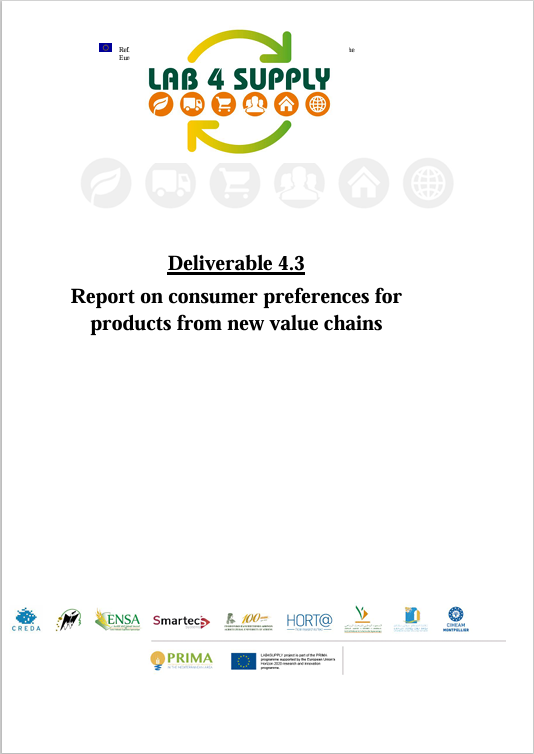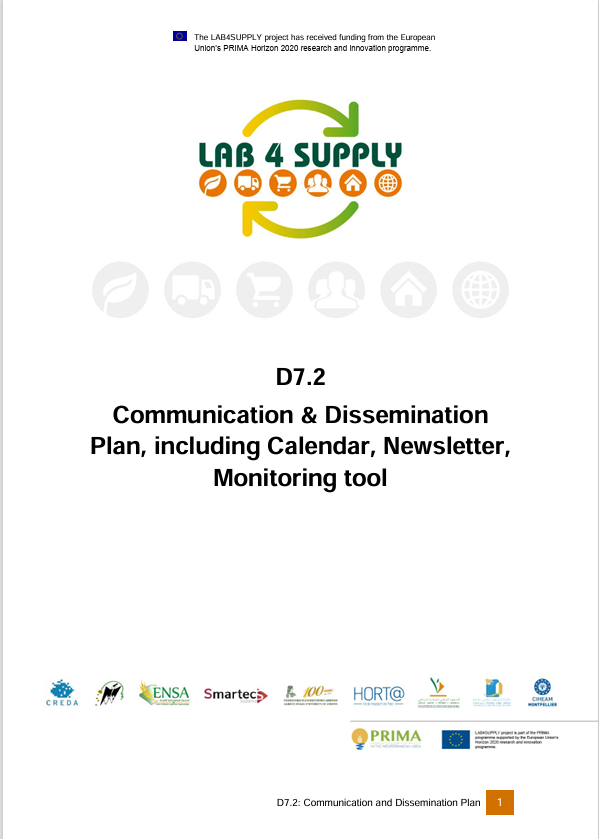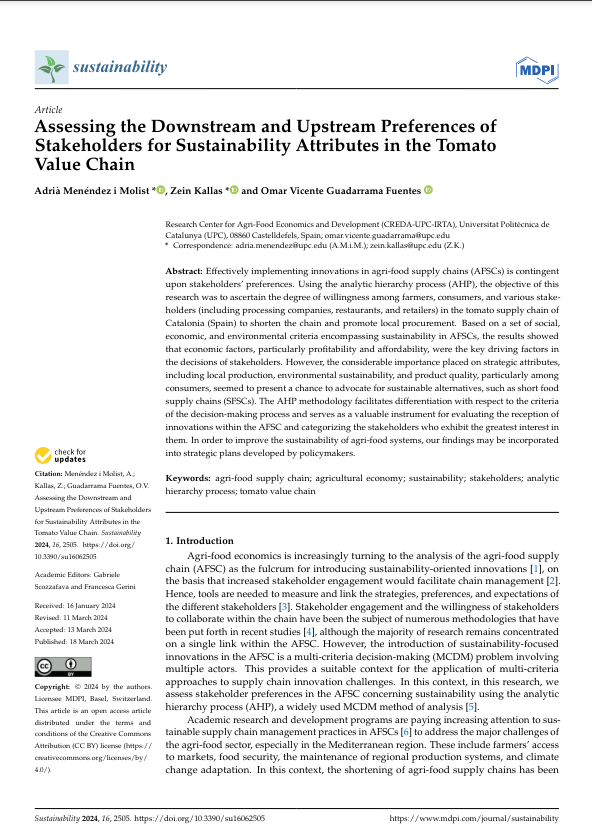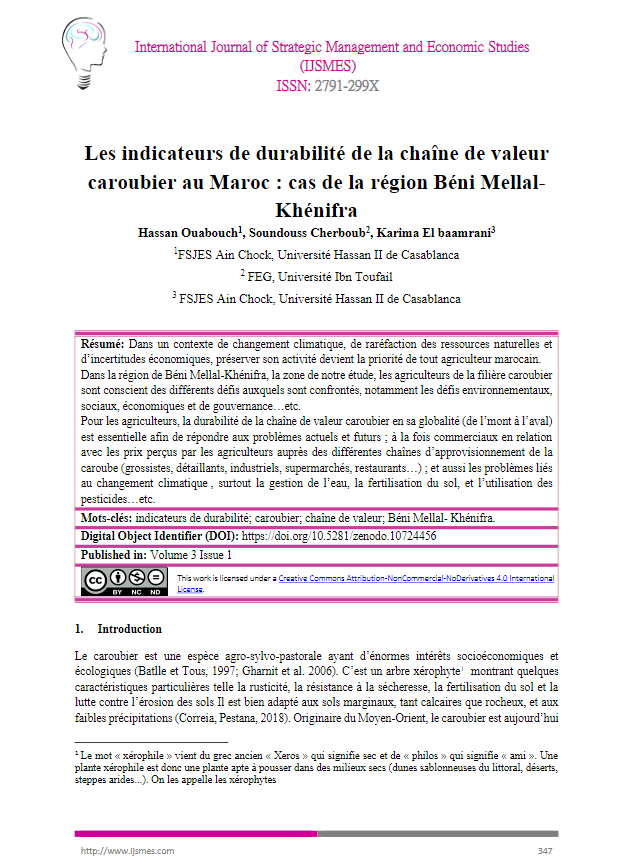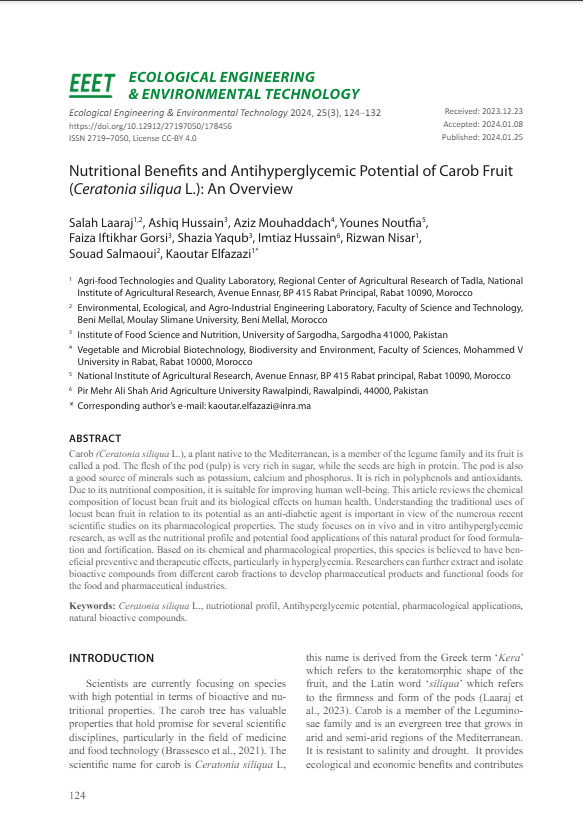LAB4SUPPLY PUBLICATIONS
Public deliverables:
Scientific publications:
Assessing the Downstream and Upstream Preferences of Stakeholders for Sustainability Attributes in the Tomato Value Chain
Adrià Menéndez i Molist. Zein Kallas and Omar Vicente Guadarrama Fuentes
Research Center for Agri-Food Economics and Development (CREDA-UPC-IRTA), Universitat Politècnica de Catalunya (UPC),
08860 Castelldefels, Spain
Abstract
Effectively implementing innovations in agri-food supply chains (AFSCs) is contingent upon stakeholders’ preferences. Using the analytic hierarchy process (AHP), the objective of this research was to ascertain the degree of willingness among farmers, consumers, and various stakeholders (including processing companies, restaurants, and retailers) in the tomato supply chain of Catalonia (Spain) to shorten the chain and promote local procurement. Based on a set of social, economic, and environmental criteria encompassing sustainability in AFSCs, the results showed that economic factors, particularly profitability and affordability, were the key driving factors in the decisions of stakeholders. However, the considerable importance placed on strategic attributes, including local production, environmental sustainability, and product quality, particularly among consumers, seemed to present a chance to advocate for sustainable alternatives, such as short food supply chains (SFSCs). The AHP methodology facilitates differentiation with respect to the criteria of the decision-making process and serves as a valuable instrument for evaluating the reception of innovations within the AFSC and categorizing the stakeholders who exhibit the greatest interest in them. In order to improve the sustainability of agri-food systems, our findings may be incorporated into strategic plans developed by policymakers.
Keywords: agri-food supply chain; agricultural economy; sustainability; stakeholders; analytic hierarchy process; tomato value chain
Les indicateurs de durabilité de la chaîne de valeur caroubier au Maroc : cas de la région Béni Mellal-Khénifra
Hassan Ouabouch. FSJES Ain Chock, Université Hassan II de Casablanca
Soundouss Cherboub. FEG, Université Ibn Toufail
Karima El baamrani. FSJES Ain Chock, Université Hassan II de Casablanca
Abstract
Dans un contexte de changement climatique, de raréfaction des ressources naturelles et d’incertitudes économiques, préserver son activité devient la priorité de tout agriculteur marocain.
Dans la région de Béni Mellal-Khénifra, la zone de notre étude, les agriculteurs de la filière caroubier sont conscient des différents défis auxquels sont confrontés, notamment les défis environnementaux, sociaux, économiques et de gouvernance…etc.
Pour les agriculteurs, la durabilité de la chaîne de valeur caroubier en sa globalité (de l’mont à l’aval) est essentielle afin de répondre aux problèmes actuels et futurs ; à la fois commerciaux en relation avec les prix perçus par les agriculteurs auprès des différentes chaînes d’approvisionnement de la caroube (grossistes, détaillants, industriels, supermarchés, restaurants…) ; et aussi les problèmes liés au changement climatique , surtout la gestion de l’eau, la fertilisation du sol, et l’utilisation des pesticides…etc.
Keywords: indicateurs de durabilité; caroubier; chaîne de valeur; Béni Mellal- Khénifra.
Nutritional Benefits and Antihyperglycemic Potential of Carob Fruit (Ceratonia siliqua L.) - An Overview
Salah Laaraj. Agri-food Technologies and Quality Laboratory, Regional Center of Agricultural Research of Tadla, National Institute of Agricultural Research, Avenue Ennasr, BP 415 Rabat Principal, Rabat 10090, Morocco.
Ashiq Hussain. Institute of Food Science and Nutrition, University of Sargodha, Sargodha 41000, Pakistan.
Aziz Mouhaddach. Vegetable and Microbial Biotechnology, Biodiversity and Environment, Faculty of Sciences, Mohammed V University in Rabat, Rabat 10000, Morocco.
Younes Noutfia. National Institute of Agricultural Research, Avenue Ennasr, BP 415 Rabat principal, Rabat 10090, Morocco.
Faiza Iftikhar Gorsi. Institute of Food Science and Nutrition, University of Sargodha, Sargodha 41000, Pakistan.
Shazia Yaqub. Institute of Food Science and Nutrition, University of Sargodha, Sargodha 41000, Pakistan.
Imtiaz Hussain. Pir Mehr Ali Shah Arid Agriculture University Rawalpindi, Rawalpindi, 44000, Pakistan.
Rizwan Nisar. Agri-food Technologies and Quality Laboratory, Regional Center of Agricultural Research of Tadla, National Institute of Agricultural Research, Avenue Ennasr, BP 415 Rabat Principal, Rabat 10090, Morocco.
Souad Salmaoui. Environmental, Ecological, and Agro-Industrial Engineering Laboratory, Faculty of Science and Technology, Beni Mellal, Moulay Slimane University, Beni Mellal, Morocco.
Kaoutar Elfazazi. Agri-food Technologies and Quality Laboratory, Regional Center of Agricultural Research of Tadla, National Institute of Agricultural Research, Avenue Ennasr, BP 415 Rabat Principal, Rabat 10090, Morocco.
Abstract
Keywords: Ceratonia siliqua L, Antihyperglycemic potential, Pharmacological applications, Nutritional profile, Natural bioactive compounds.
